18 Wild Animals in Laos [Wildlife in Laos]
Want to know more about the wildlife in Laos?
Discover 18 wild animals in Laos in this post, as well as interesting facts about them. 🇱🇦
Learn All About Lao Animals
Ready to learn all about Lao animals?
I’ve always been fascinated by animals, and by how they can be so different from one country to another. In this guide, we’ll focus on the many animals Laos has on the land, in the sky, and underwater.
I’ve split the guide into 6 categories:
- Native animals from Laos
- Endangered animals of Laos
- What is the national animal of Laos?
- How many animals native to Laos?
- Are there pandas in Laos?
- Are there tigers in Laos?
Let’s dive in right away with our first category!
Native Animals from Laos
Laos is the only landlocked southeastern Asian country, and it is a socialist state. It is an important hub for overland trade and therefore became culturally and economically wealthy, and it used to be a French colony. It is bordered by Thailand, Cambodia, China, Myanmar, and Vietnam, and its capital and largest city is Vientiane, which counts more than 948,000 inhabitants.
An interesting part of the country that I wanted to tackle is its wildlife. In light of that, I have listed the best of it, and I hope you will love learning what animals live in Laos.
Here’s the Laos animals list.
1. Leopard cat
- Name: Leopard cat
- Scientific name: Prionailurus bengalensis
- Conservation status:
The leopard cat is a small species of wild cat native to southern, southeastern, and eastern Asia. It is threatened by hunting and habitat loss, but thanks to its wide range and large numbers it is still considered of least concern.
This wild cat is the most widely distributed one in all of Asia. It inhabits tropical and subtropical forests as well as plantations, at more than 1,000 m / 3,300 ft above sea level.
2. Lar gibbon
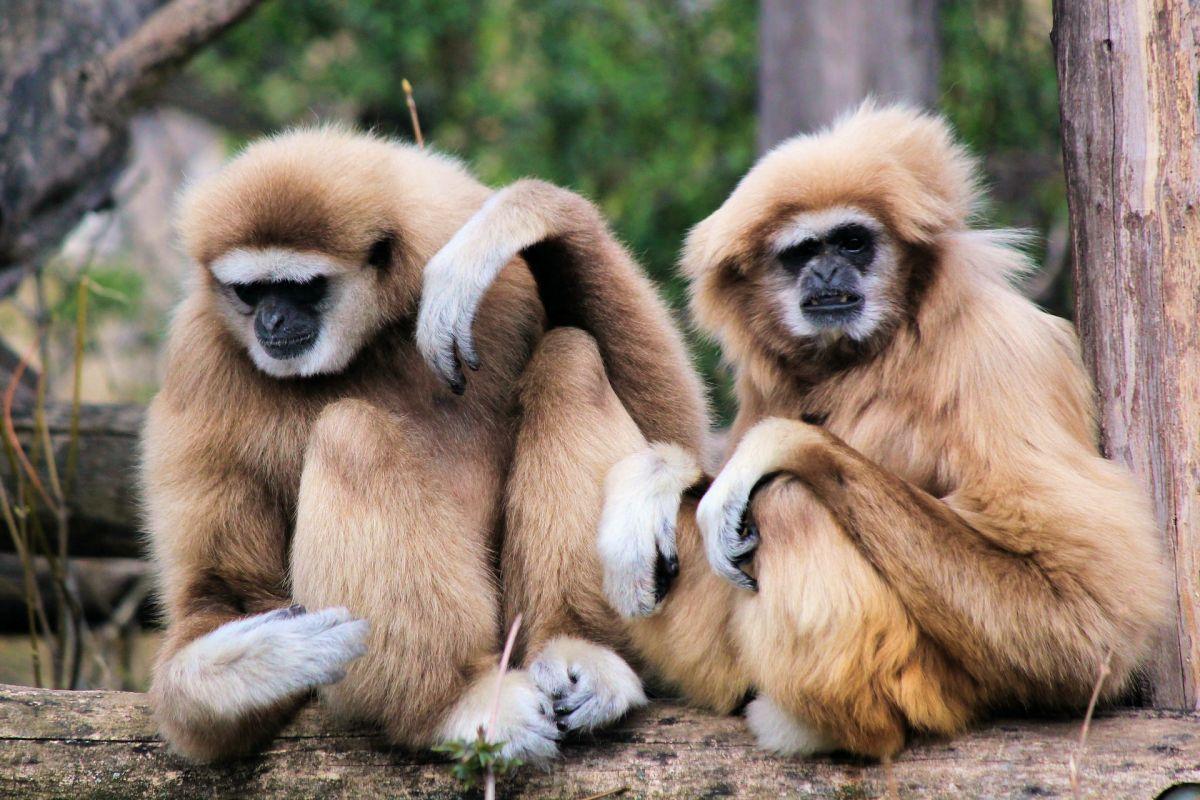
- Name: Lar gibbon
- Scientific name: Hylobates lar
- Conservation status:
The lar gibbon, also known as the white-handed gibbon, is a species of primate native to southeastern Asia: it can be found in Laos, Indonesia, Myanmar, Thailand, and Malaysia. It inhabits forests, rainforests, bamboo forests, and evergreen forests, at up to 1,200 m / 3,937 ft above sea level.
This primate is considered frugivorous, although fruits only constitute about half its diet, the rest being made of leaves, insects, and flowers, in that order.
3. Bengal monitor
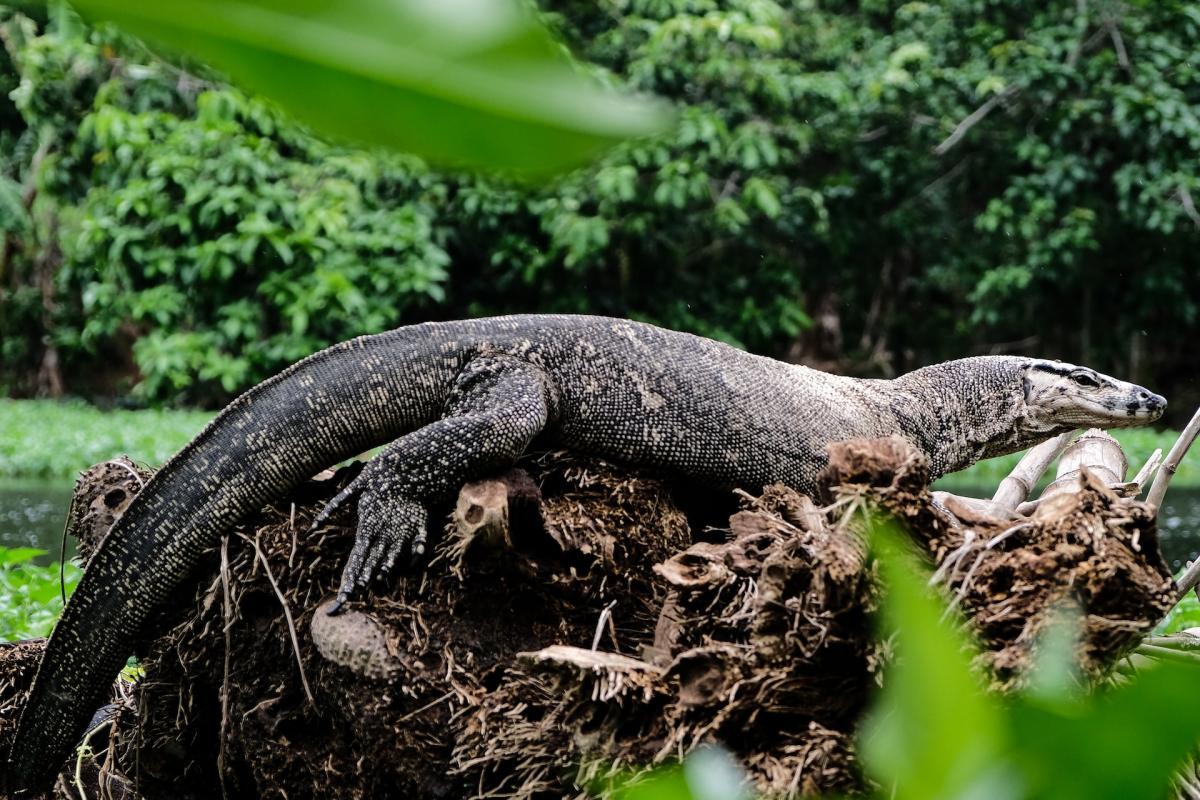
- Name: Bengal monitor
- Scientific name: Varanus bengalensis
- Conservation status:
The Bengal monitor, also known as the common Indian monitor, is a species of monitor lizard that can be found in southeastern and western Asia, as well as on the Indian subcontinent. It is quite large, and terrestrial, although younger individuals might be more arboreal.
This lizard is carnivorous and preys on arthropods, as well as vertebrates, birds, eggs, and fish. Adult Bengal monitors do not fear any animal apart from humans, but young ones are much more vulnerable.
4. Javan rhinoceros
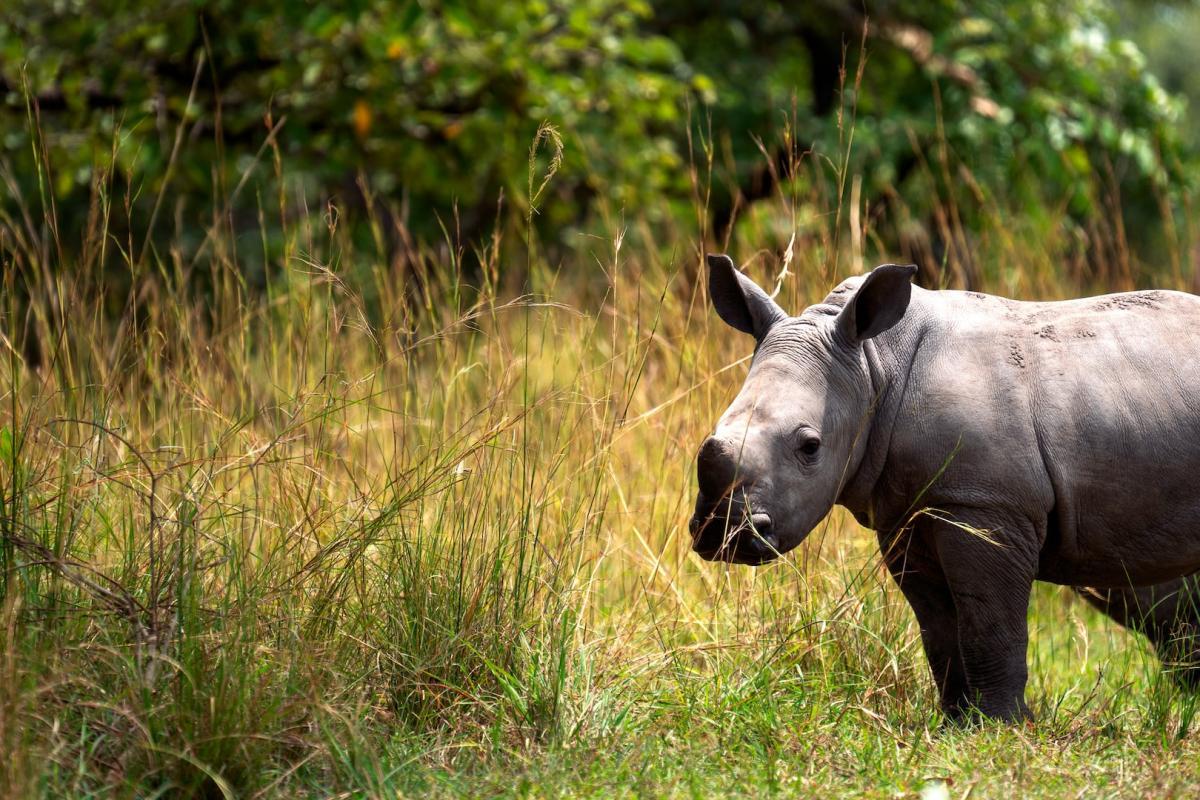
- Name: Javan rhinoceros
- Scientific name: Rhinoceros sondaicus
- Conservation status:
The Javan rhinoceros, also known as the lesser one-horned rhinoceros or the Sunda rhinoceros, is a very rare species of rhino native to southeastern Asia. While it used to be one of the most widespread Asian rhinoceros, it is now most likely the rarest large mammal on the planet, with only 74 individuals in a single population, and none in captivity.
The main reasons for the decline of the Javan rhinoceros are poaching for its horns (which are used in traditional Chinese medicine and can be sold for as much as $30,000 per kg on the black market), trophy hunting, habitat loss, and wars.
5. Phou Khao Khouay leaf-nosed bat
- Name: Phou Khao Khouay leaf-nosed bat
- Scientific name: Hipposideros khaokhouayensis
- Conservation status:
The Phou Khao Khouay leaf-nosed bat is a species of bat endemic to Laos and Vietnam. It is currently considered vulnerable to extinction because of a small range of less than 20,000 km² / 7,700 sq mi, as well as habitat loss and degradation.
This bat lives at elevations between 180 and 400 m / 590 and 1,310 ft above sea level and inhabits disturbed and intact evergreen forests.
6. Reticulated python
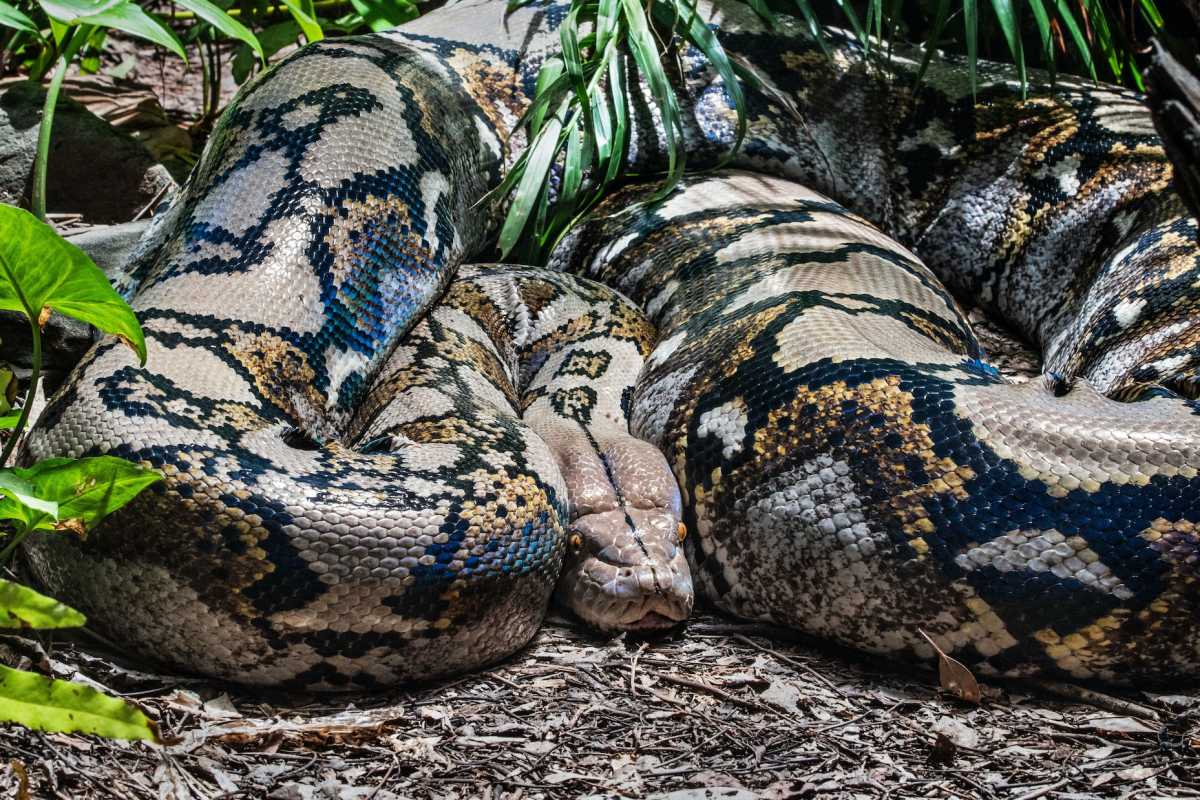
- Name: Reticulated python
- Scientific name: Malayopython reticulatus
- Conservation status:
The reticulated python is the world’s longest snake, and the third-heaviest one. It is native to southern and southeastern Asia, and thanks to its wide distribution, it is considered of least concern; however, it faces serious threats such as poaching for use in traditional medicine and for its skin, as well as capture to be kept as a pet.
Although terrestrial, the reticulated python is an excellent swimmer that has reportedly colonized many small islands within its range.
7. Mekong giant catfish
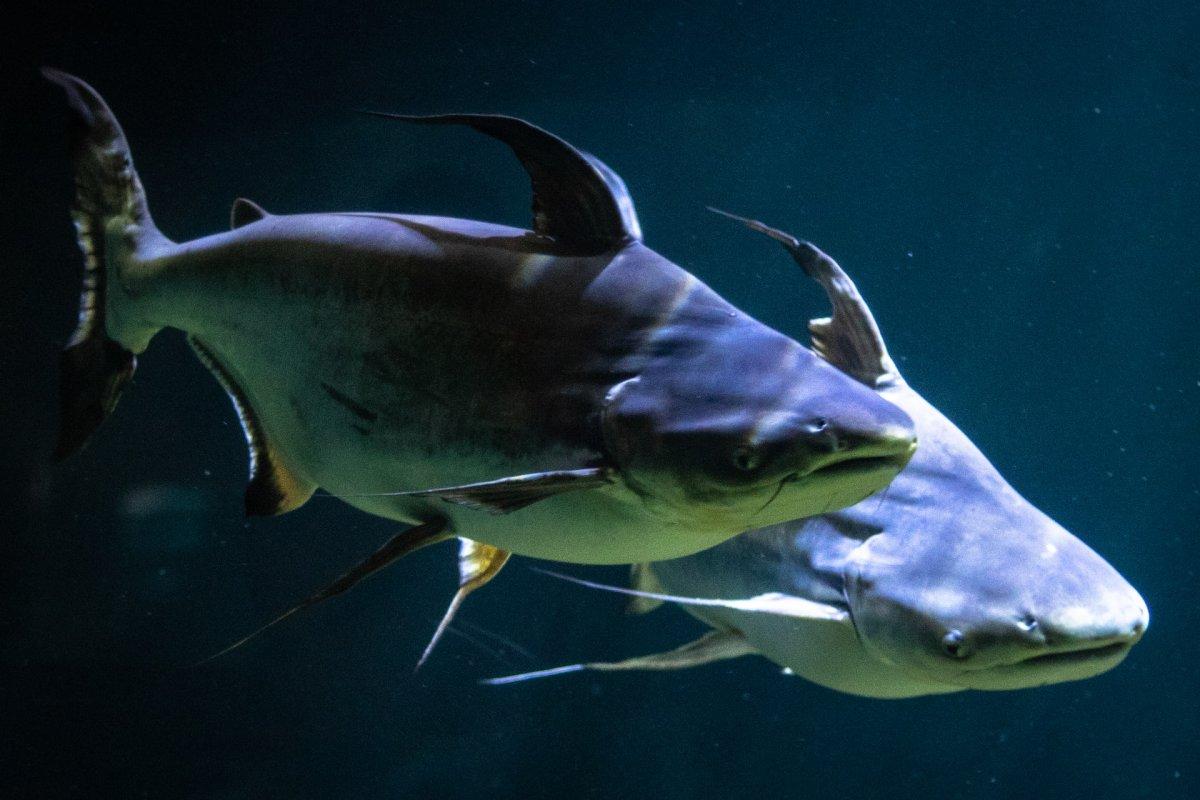
- Name: Mekong giant catfish
- Scientific name: Pangasianodon gigas
- Conservation status:
The Mekong giant catfish is a large species of catfish native to the Mekong basin in southeastern Asia and to China. It is losing more and more of its habitat and is therefore on the brink of extinction.
This catfish is regarded with reverence in Thai folklore, and it can only be fished after specific rituals and offerings. It is also generally represented in ancient art along the Mekong River.
8. Giant ibis
- Name: Giant ibis
- Scientific name: Thaumatibis gigantea
- Conservation status:
The giant ibis is a species of wading bird from the ibis family. Most of its population is located in northern Cambodia, and some birds are surviving in southern Laos and in some areas of Vietnam.
This bird inhabits lakes, swamps, and marshes, and lives in lowlands. It feeds on eels, invertebrates, crustaceans, reptiles, and small amphibians, as well as insects and seeds. It is listed as critically endangered because of deforestation and the drainage of wetlands for cultivation.
9. Asian giant softshell turtle
- Name: Asian giant softshell turtle
- Scientific name: Pelochelys cantorii
- Conservation status:
The Asian giant softshell turtle, also known as the frog-faced softshell turtle or the Cantor’s giant softshell turtle, is a species of freshwater turtle native to Southeast Asia. It disappeared from much of its former range in the 20th century and is also listed as critically endangered.
As its name suggests, the carapace of this turtle is very smooth and olive-colored. Despite its peaceful appearance, it is an ambush carnivore that feeds on mollusks, crustaceans, and fish, and it spends almost all of its time buried and motionless, with only its face protruding from the ground.
10. Slender-billed vulture
- Name: Slender-billed vulture
- Scientific name: Gyps tenuirostris
- Conservation status:
The slender-billed vulture is yet another critically endangered species that you will find in Laos. It is a large vulture native to southeastern Asia and sub-Himalayan regions. Previously a subspecies of the Indian vulture, it is now a species of its own, and it breeds on cliffs.
This vulture’s population has declined by 97 percent in only 7 years, from 2000 to 2007, mostly due to poisoning. It will most likely become extinct in the next decade.
11. Greater hog badger
- Name: Greater hog badger
- Scientific name: Arctonyx collaris
- Conservation status:
The greater hog badger is a very large species of mustelid native to Southeast Asia. Its population is largely declining because of poaching, and it is considered vulnerable to extinction.
This peculiar animal is active by day and feeds on almost anything within its range, from fruits and roots to small animals. It has a unique pig-like snout, as well as two black stripes on its body and an elongated white face.
12. Sun bear
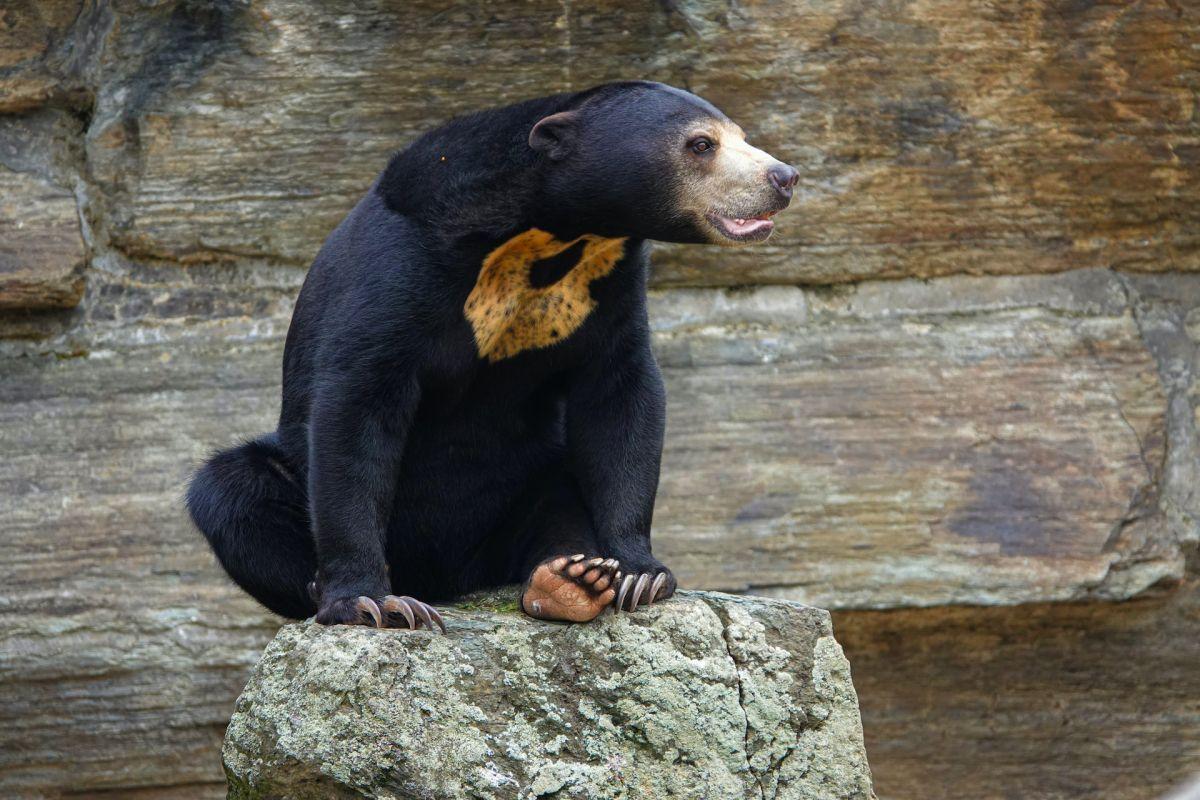
- Name: Sun bear
- Scientific name: Helarctos malayanus
- Conservation status:
The sun bear is the smallest species of bear in the world, standing at about 70 cm / 28 in at the shoulder, and weighing up to 65 kg / 143 lb. It is still stockily built, with large paws, and is still very powerful.
This bear is the most arboreal of all, and it is an excellent tree climber that spends most of its time sunbathing or sleeping in trees 2 to 7 m / 7 to 23 ft above the ground.
13. Indian muntjac
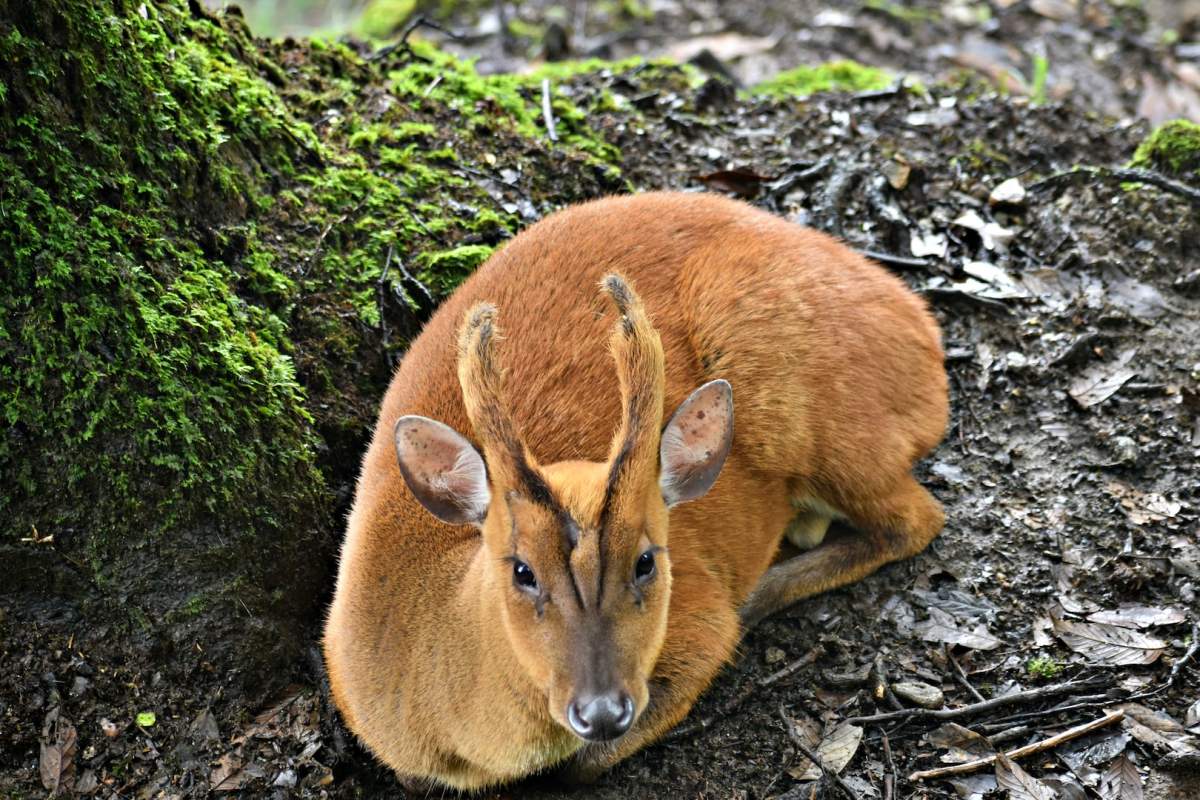
- Name: Indian muntjac
- Scientific name: Muntiacus muntjak
- Conservation status:
The Indian muntjac, also known as the barking deer or the southern red muntjac, is a species of deer native to southern and southeastern Asia. It is one of the smallest deer species but has a particularly loud call that sounds like a dog’s bark, which is where it gets its name from.
The similarity with dogs even goes further than that, as males have canines, which are actually short antlers that branch once near the base.
14. Red-shanked douc
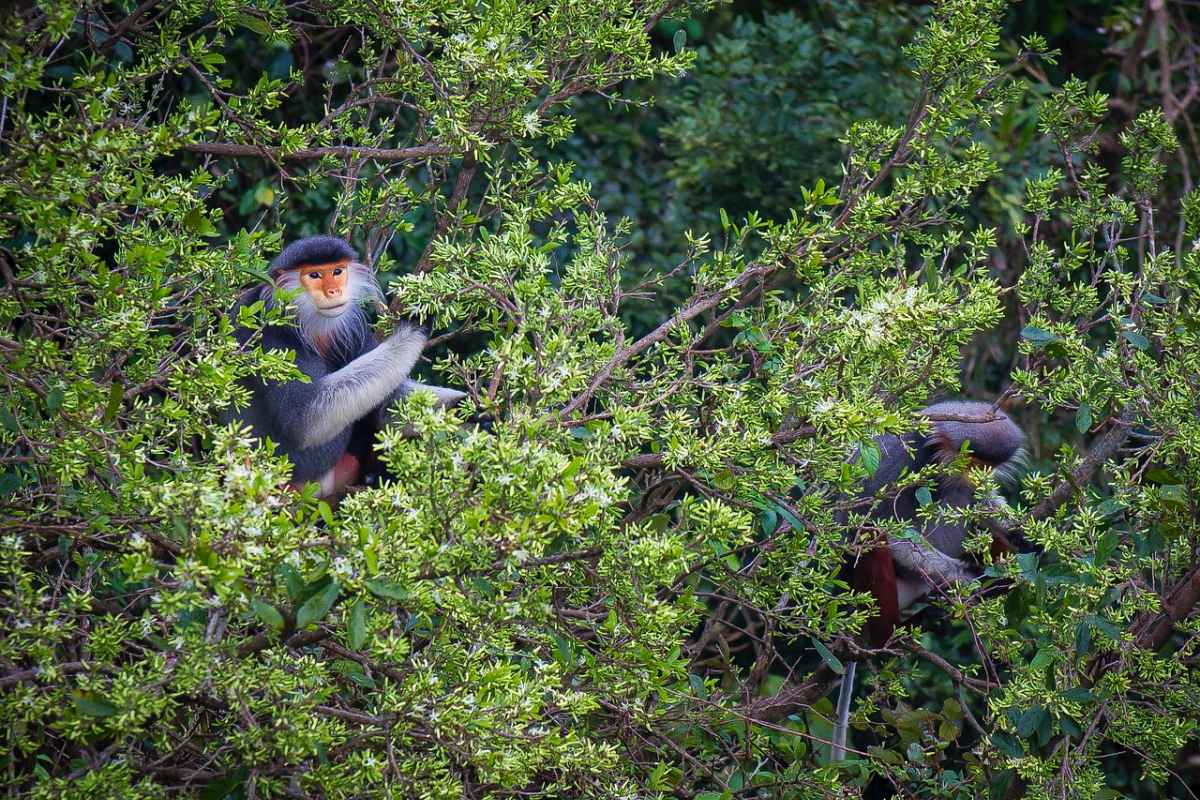
- Name: Red-shanked douc
- Scientific name: Pygathrix nemaeus
- Conservation status:
The red-shanked douc is a species of Old World monkey native to the Indochinese Peninsula, in southeastern Asia. It lives in societies of about 18 primates, and mostly feeds on leaves.
Sadly, this monkey is critically endangered because of habitat loss, capture for the pet trade, and hunting. Hunting is a very serious threat, and the red-shanked douc is killed for its meat, but also for traditional medicine and the making of glue.
15. Siamese crocodile
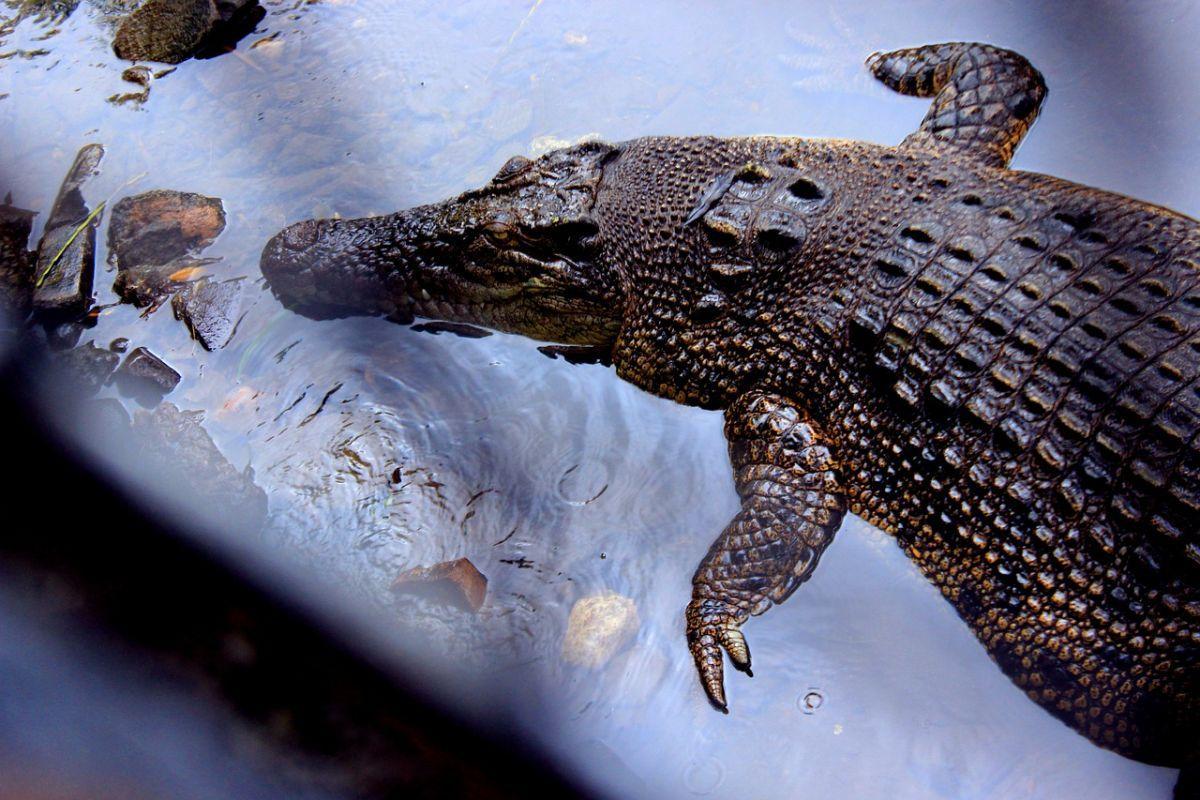
- Name: Siamese crocodile
- Scientific name: Crocodylus siamensis
- Conservation status:
The Siamese crocodile, also known as the Singapore small-grain, the soft-belly, or the Siamese freshwater crocodile, is a medium-sized species of crocodile native to Laos, Indonesia, Myanmar, Cambodia, Thailand, Brunei, East Malaysia, and Vietnam. It inhabits freshwater habitats such as lakes, streams, marshes, and swamplands, and is already extirpated from many regions on top of being on the brink of extinction.
This crocodilian is extinct from 99 percent of its former range, but more than 700,000 individuals are held on commercial crocodile farms! Yes, that exists!
16. Chinese mountain pit viper
- Name: Chinese mountain pit viper
- Scientific name: Ovophis monticola
- Conservation status:
The Chinese mountain pit viper, also simply known as the mountain pit viper, is a species of venomous snake native to much of central, southeastern, and eastern Asia. Not much is known about the venom of this snake, but there has been one recorded fatality.
This pit viper can be found in Laos, Thailand, China, Vietnam, and Myanmar, among other countries, and it is further divided into 3 subspecies, depending on the area: the mountain pit viper, the Taiwanese mountain pit viper, and the Gaoligong mountain pit viper.
17. Banteng
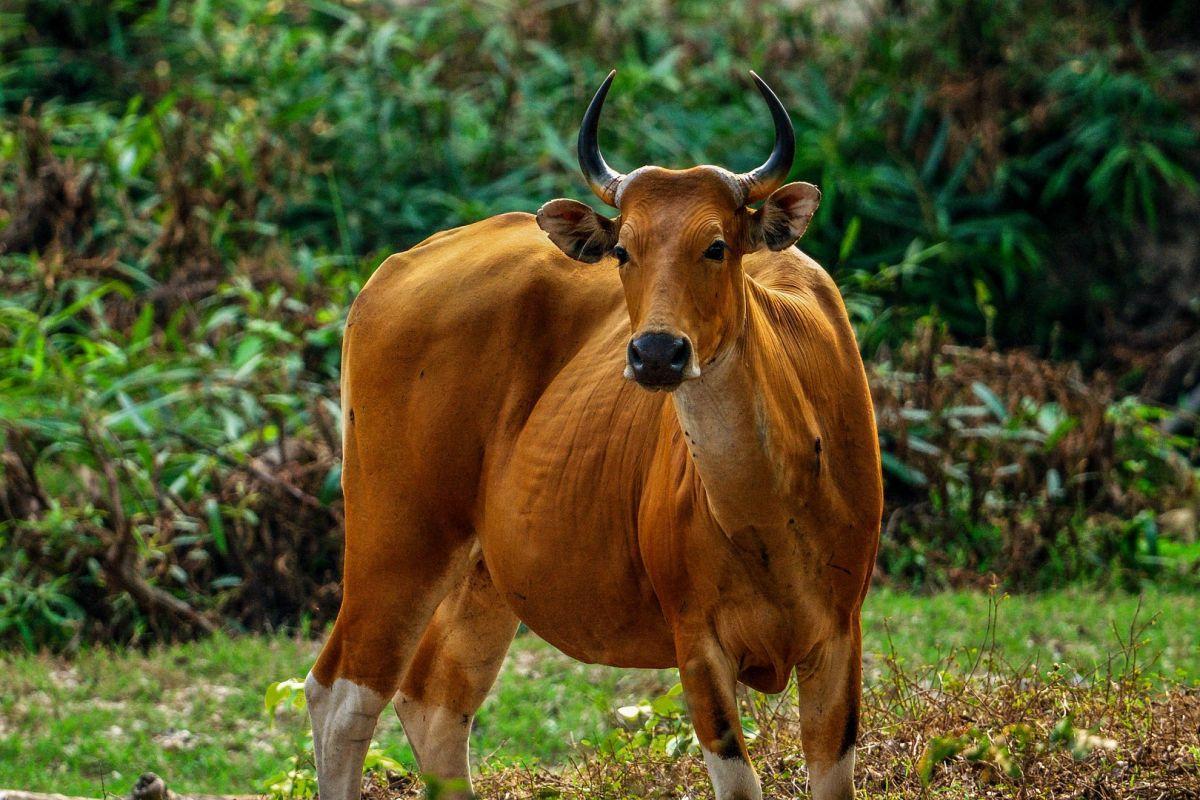
- Name: Banteng
- Scientific name: Bos javanicus
- Conservation status:
The banteng, also known as the tembadau, is a species of cattle native to Southeast Asia. Outside of being larger and heavier than domestic cattle, it is very similar in appearance.
This mammal is sexually dimorphic: while bulls are much larger, more stockily built, and dark brown to black, cows are pale brown or chestnut red, and thinner. Its population has declined by more than half in the past few decades, mostly because of poaching, habitat fragmentation, and disease outbreaks.
18. Mainland serow
- Name: Mainland serow
- Scientific name: Capricornis sumatraensis
- Conservation status:
The mainland serow is one of four species of serow native to southeastern Asia, the Himalayas, and China. It is a goat-like animal that inhabits hilly forests above 300 m / 980 ft, but usually between 2,500 and 3,500 m / 8,200 and 11,500 ft in the Himalayas.
This mammal is either solitary or lives in small groups, and it is territorial. It usually stays within its territory and feeds on shoots, leaves, and grasses, and gives birth to a single young during the autumn.
—
So there you have them, these were my 18 wild animals in Laos. I hope you enjoyed this list and that you learned something new today.
In case you want to learn more about Laos wildlife, feel free to keep reading, as I still have lots of things to tell you about:
Endangered Animals of Laos
This is definitely the saddest part of the list, but it is essential to raise awareness. Because of this, let’s go through the list of endangered animals in Laos.
Here are the animals in danger of extinction in Laos.
- Indochinese warty pig
- Giant pangasius
- Javan rhinoceros
- Black crested gibbon
- Vietnamese crested angus
- Sunda pangolin
- and 39 more…
- Eld’s deer
- Masked finfoot
- Owston’s civet
- Irrawaddy dolphin
- Asian elephant
- and 62 more…
To see the full list of endangered species in Laos, head over to the International Union for Conservation of Nature’s Red List.
What is the National Animal of Laos?
The national animal of Laos is the Asian elephant.
Also known as the Asiatic elephant, this species is smaller than its more famous African counterparts (the African bush elephant and the African forest elephant), but it remains the largest land mammal in Asia.
Particularly important in local culture and folklore, it is used for safari tourism in several southeastern Asian countries, and it is featured in many fables and tales of religions such as Buddhism and Hinduism.
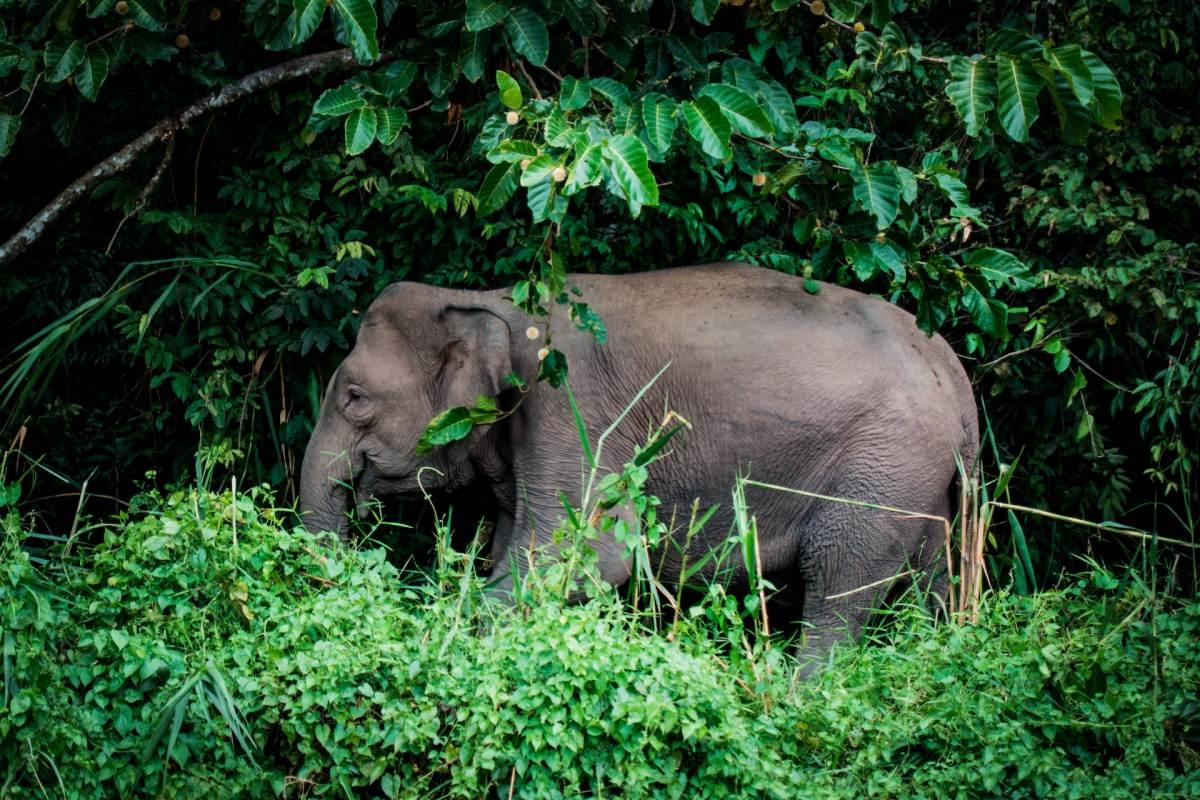
How Many Animals Native to Laos?
What is the diversity of native animals in Laos?
Let’s look at the total number of species of Chordata (mammals, birds, fishes, and reptiles).
Total number of animal species in Laos: 1,855 (15,319 in total in South and Southeast Asia)
Are there pandas in Laos?
No, there are no pandas in Laos.
However, although not native to the country, some red pandas have been rescued from smugglers. This species, native to the Himalayas, cannot be found in the wild in Laos, and it is strictly protected in all of Asia.
Are there tigers in Laos?
Just like leopards, tigers completely vanished from Laos, and none are left.
Since 2014, tigers have disappeared from their last stand in Laos, Nam Et-Phou Louey National Protected Area. Leopards were already gone about 10 years prior, and tigers have now vanished because of snares. The Indochinese tiger, the local subspecies of the tiger, is now only surviving in Myanmar and Thailand.
More About Animals in the World!
Loved these Laos animal facts? Want to see what animals live in other countries?
Then check out these posts:
Or click here to see ALL the facts up on the blog! Spoiler alert: there’s A LOT of them.
Share the knowledge! Click on the buttons below to share information about these famous animals in Laos with your friends, and help them learn more about the world 🙂
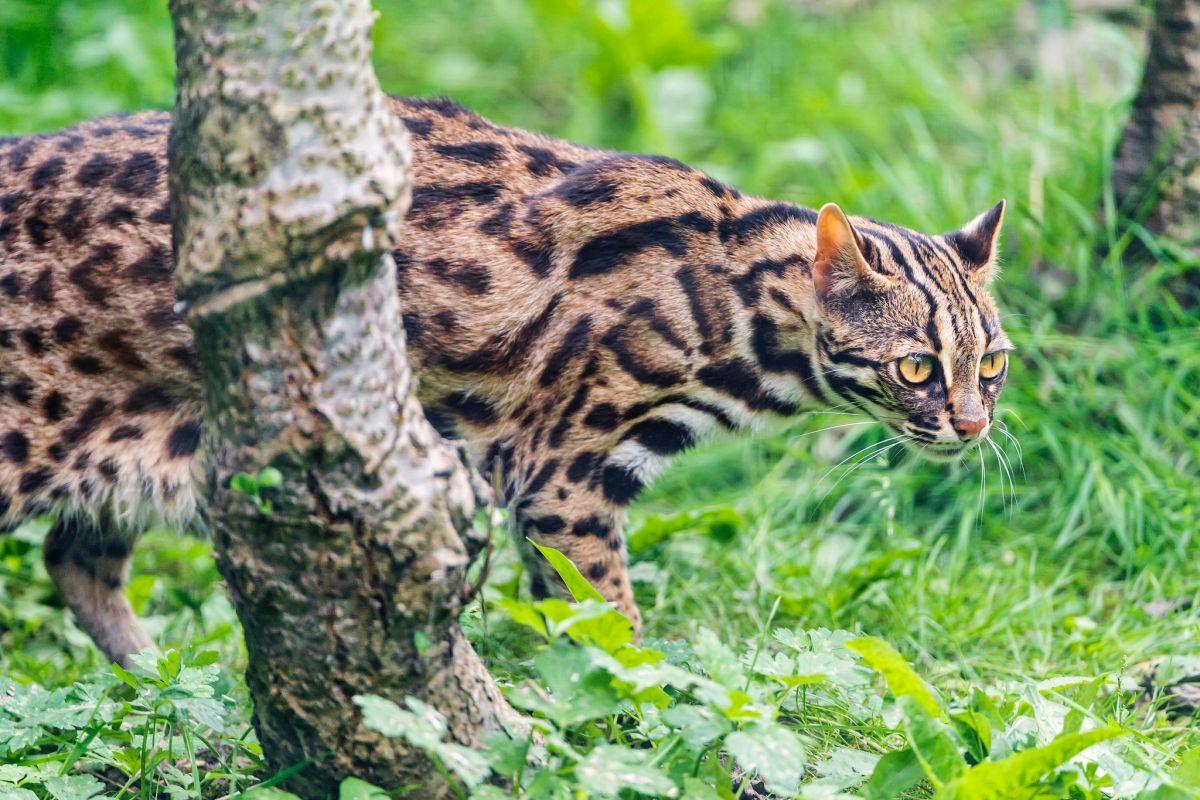
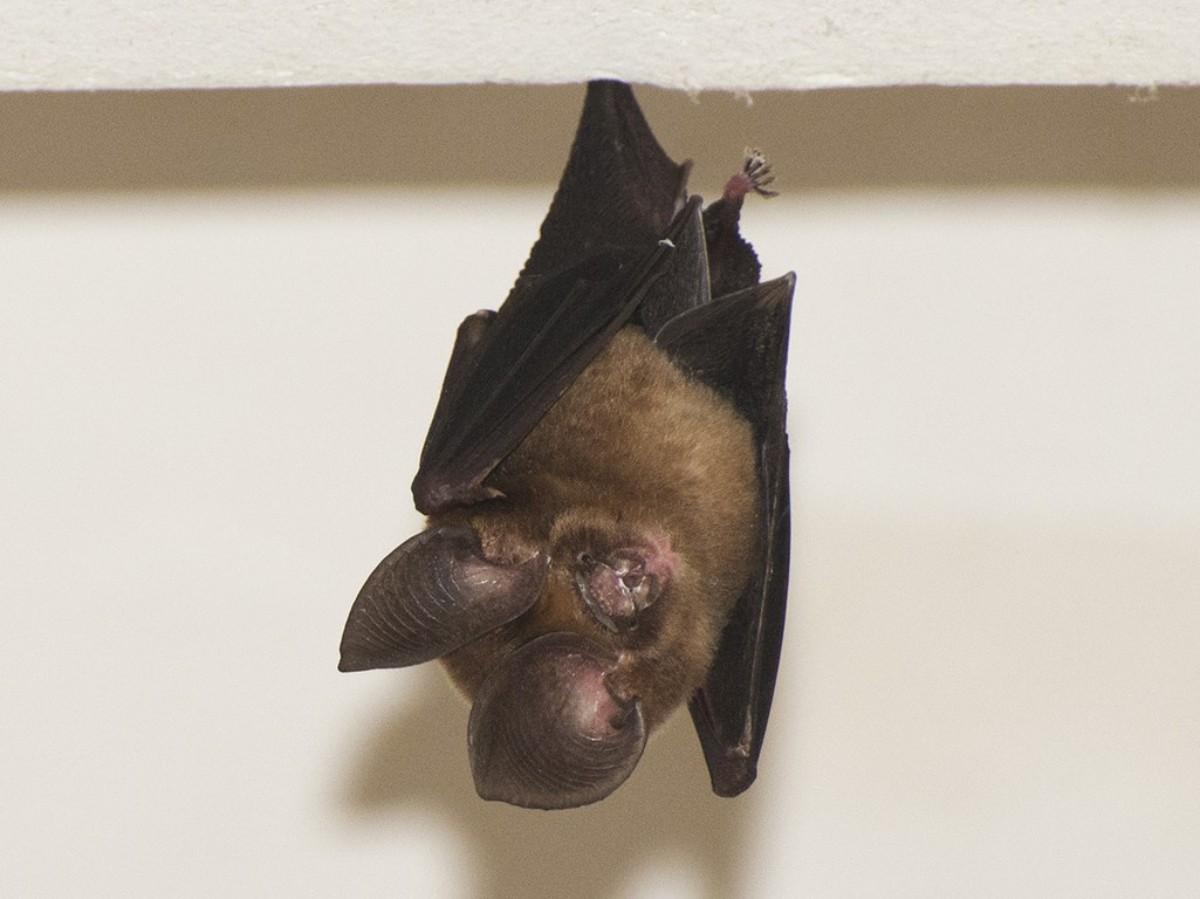
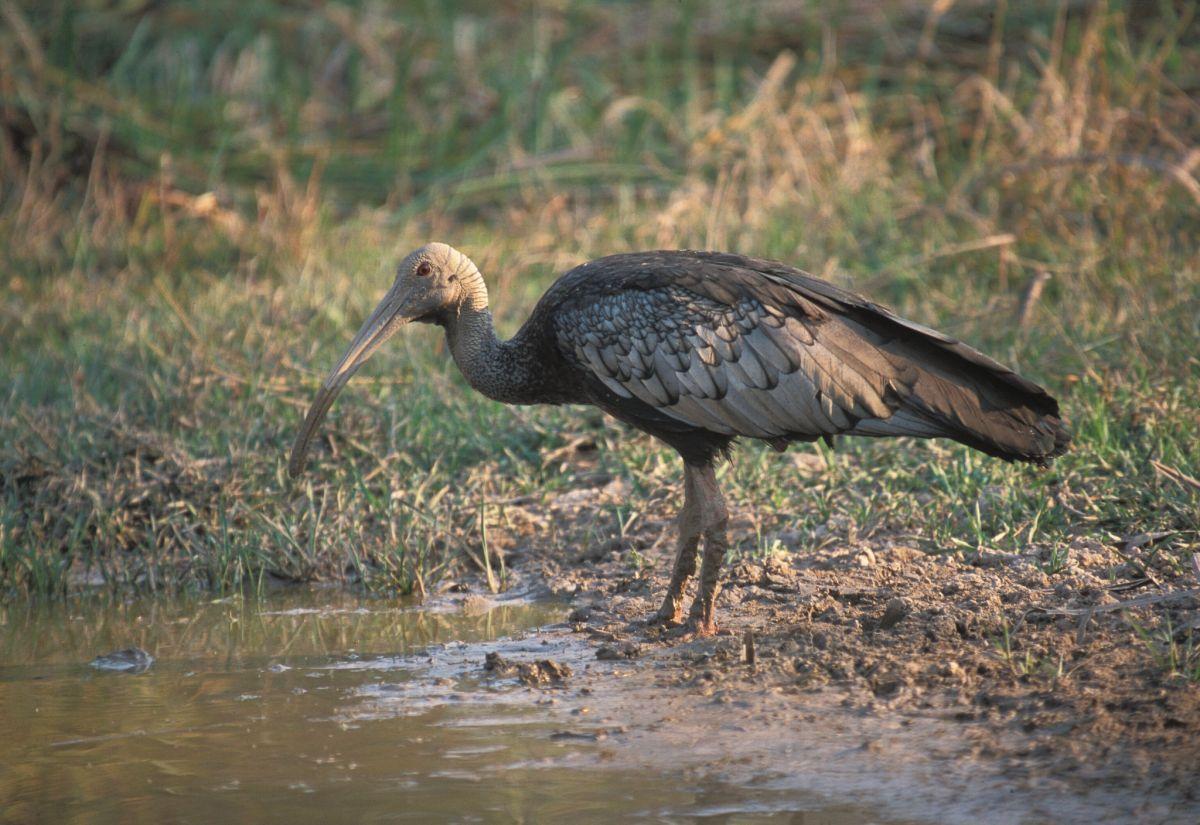
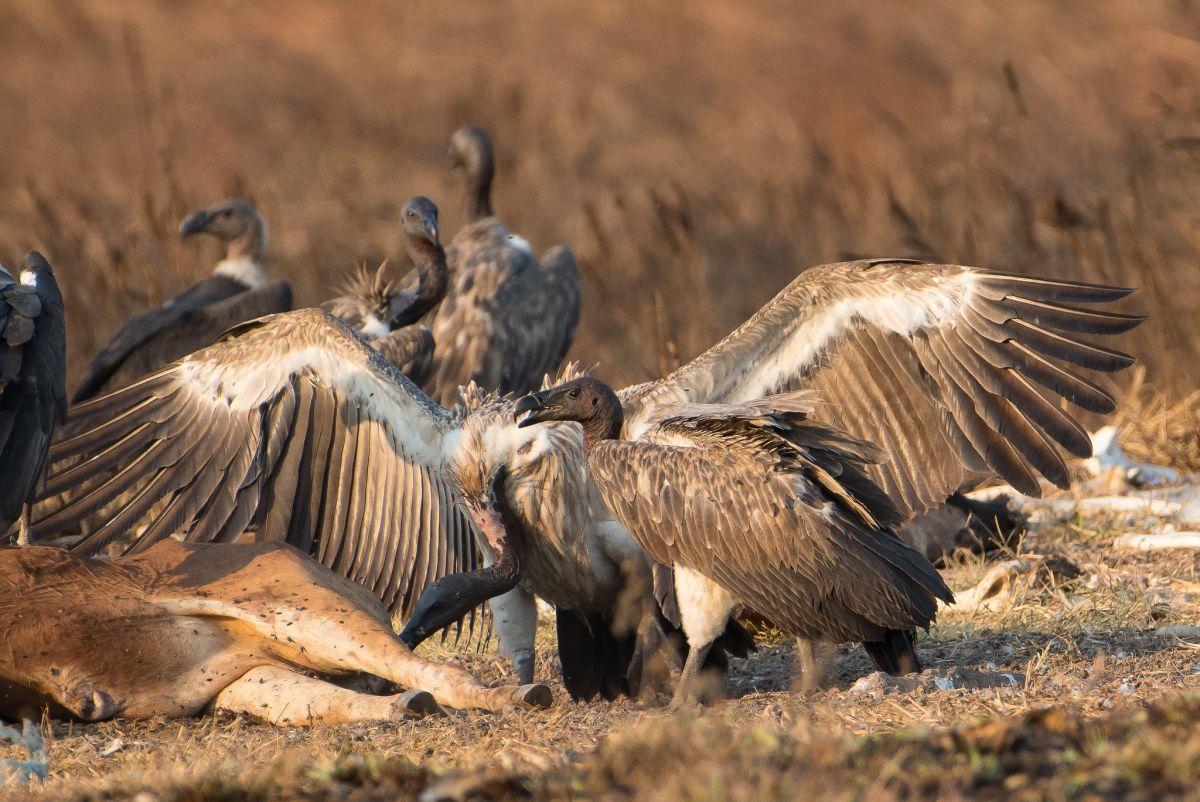
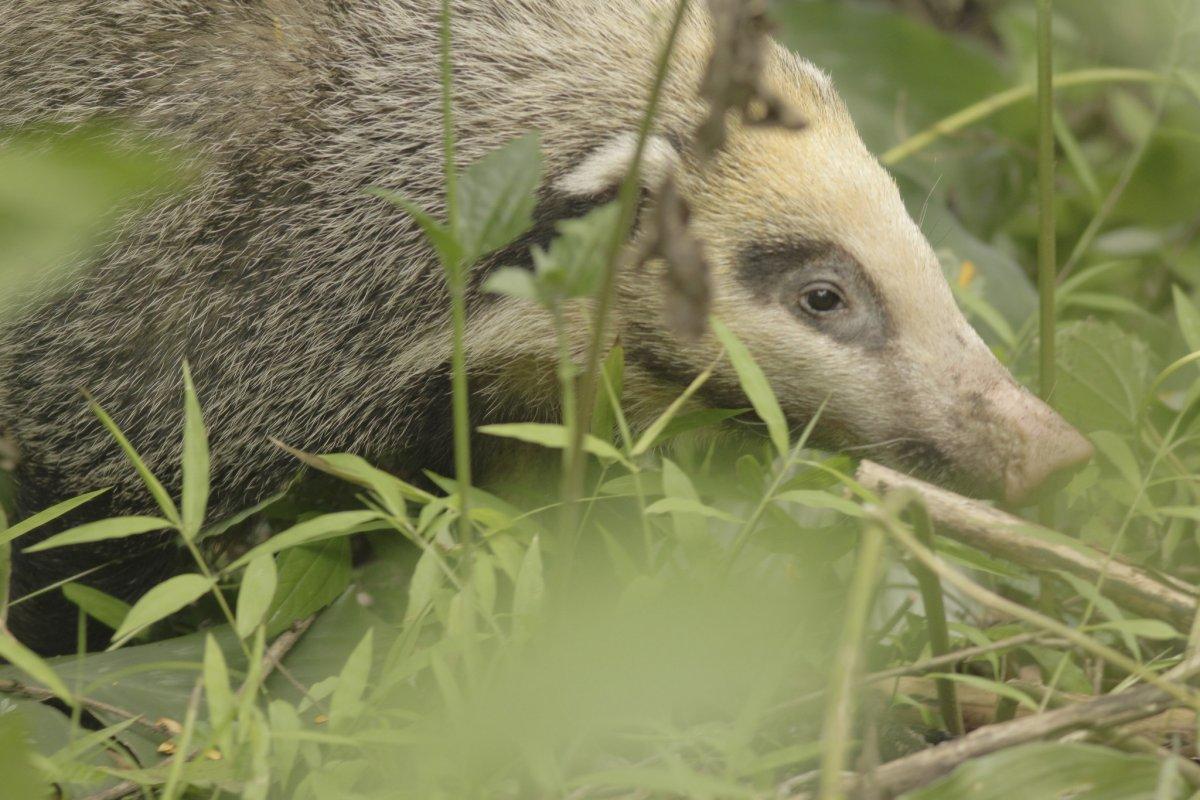
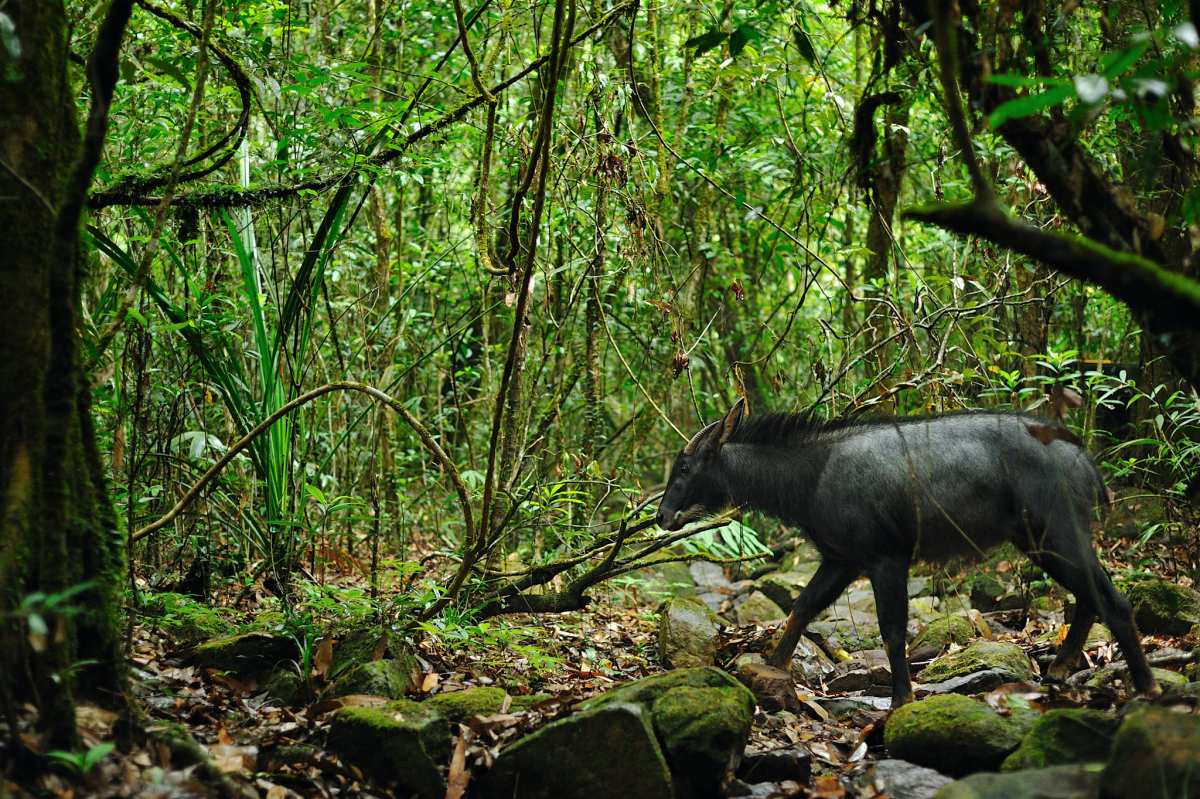

![13 Wild Animals in Tajikistan [Wildlife in Tajikistan]](https://www.kevmrc.com/wp-content/uploads/2022/12/13-wild-animals-in-tajikistan.jpg)
![18 Wild Animals in Cyprus [Wildlife in Cyprus]](https://www.kevmrc.com/wp-content/uploads/2022/06/18-wild-animals-in-cyprus.jpg)
![18 Wild Animals in Myanmar [Wildlife in Myanmar]](https://www.kevmrc.com/wp-content/uploads/2022/12/18-wild-animals-in-myanmar.jpg)